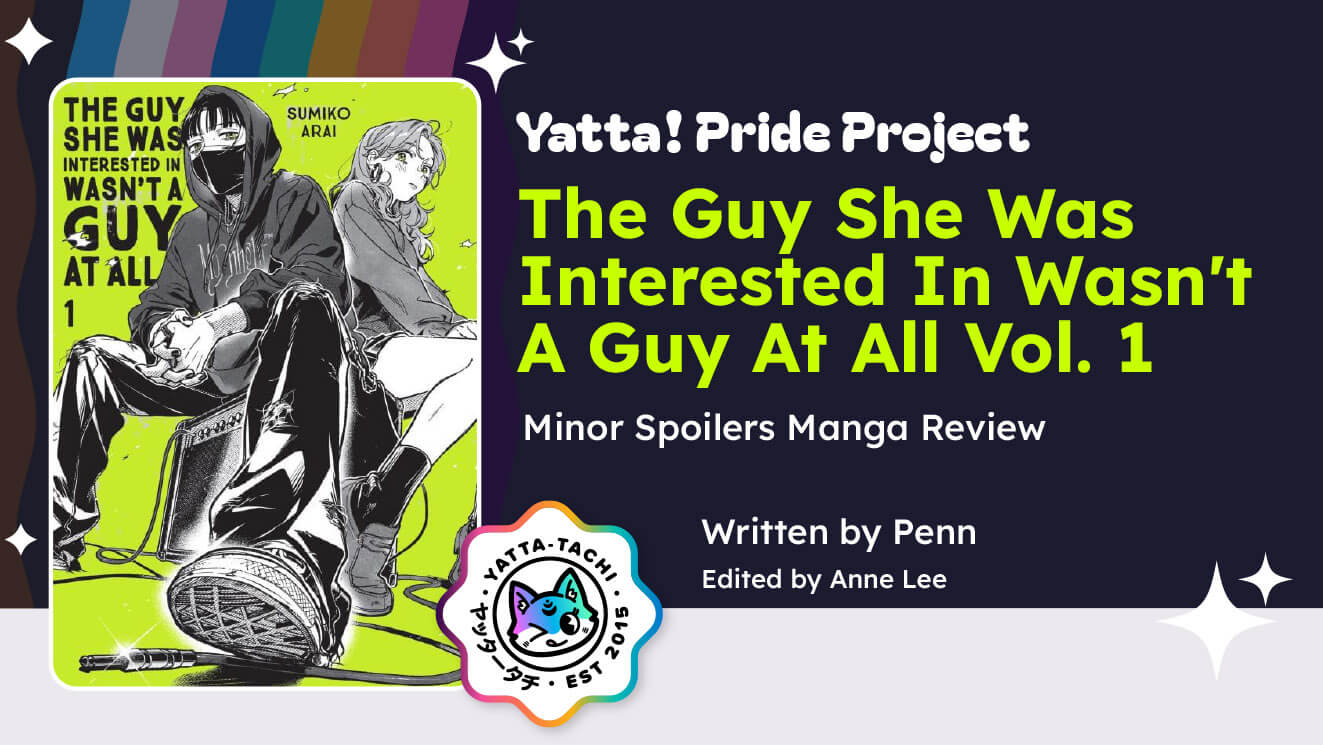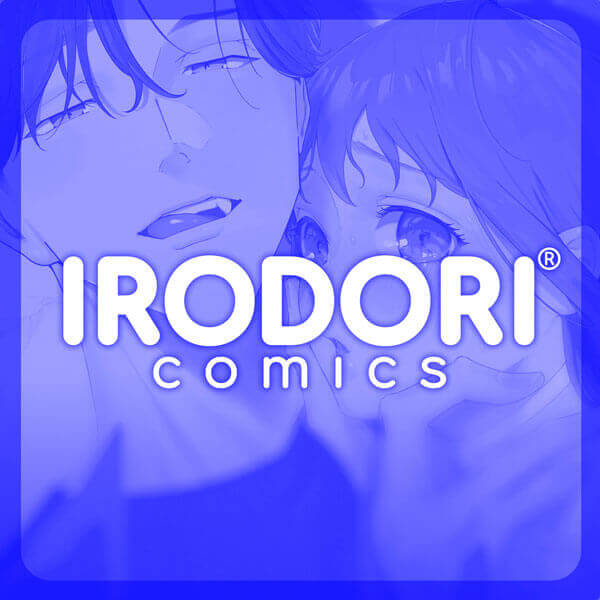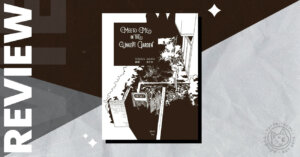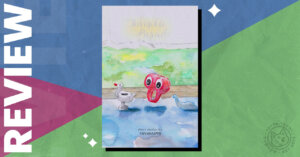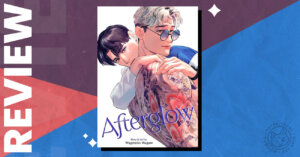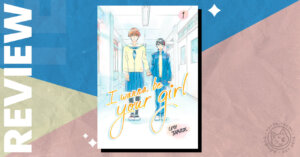Synopsis
Aya Oosawa is an outgoing girl who likes flashy things and rock music. When she starts to visit an old record store for new music, she meets the mysterious clerk Koga and develops a crush on him after bonding over music. Unbeknownst to Aya, Koga is actually one of her female classmates. While Koga must decide whether or not to tell Aya the truth, Aya must grapple with how her crush, budding friendship, and her love of rock music start affecting how she is perceived by her group of friends.
The Visuals
One of the strongest aspects of this book is Sumiko Arai’s artwork. The character designs for the main protagonists Mitsuki Koga and Aya Oosawa are reminiscent of the female leads from both Ai Yazawa’s manga NANA as well as Takeshi Ikeda’s manga Whispered Words. Aya Oosawa is a redhead like the titular Nana Komatsu, and her love of flashy things is like Nana’s love for cute things. She also wears flashy and cute things as well, as demonstrated by her casual clothes in certain chapters.
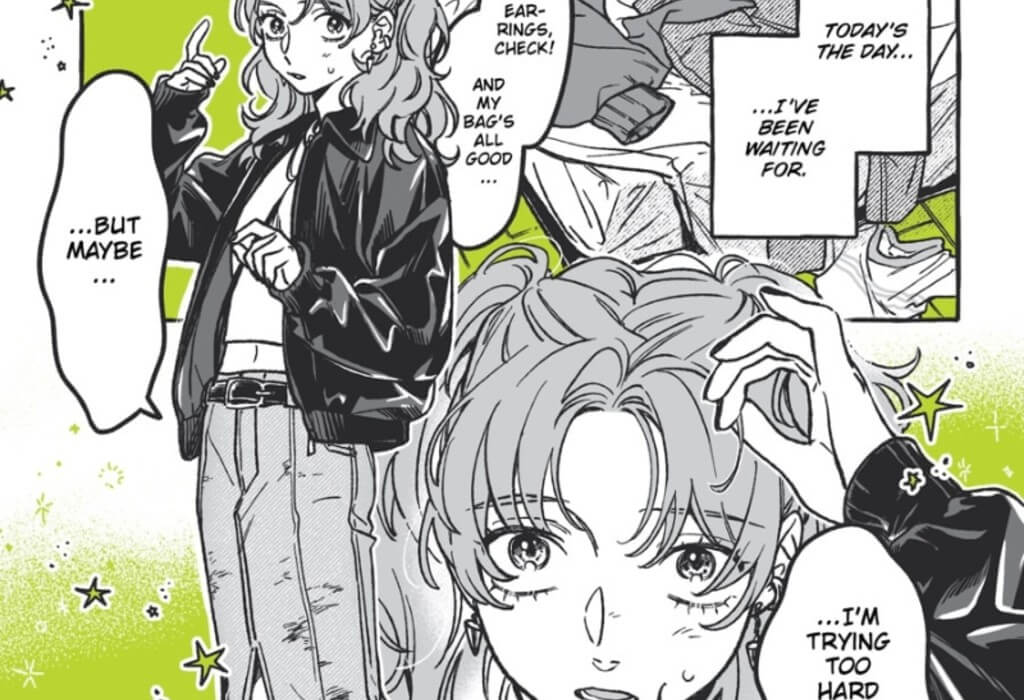
Mitsuki, on the other hand, is brunette and bespeckled like Sumika Murasame, but only at school. When working at the record store, she goes by her last name and wears contacts, a black face mask, and a hoodie in order to not be recognized by her classmates. Mitsuki’s dual looks reflect the dual aspects of her personality: reserved, yet secretly passionate. The dual looks also serve as a creative twist on “brunette and pastel-haired girl couple” seen in other yuri manga such as the aforementioned Whispered Words and Kase-San and Morning Glories.
Accenting the bold character designs are the green backgrounds that this manga is known for. This is the first manga I’ve read that uses spot color, a comic book technique that uses one color to make black-and-white artwork stand out more. In the case of this manga, the green definitely takes some getting used to, but once I did, it felt like a natural background color. Moreover, I also couldn’t help but interpret it as a deeper metaphor. You see, green is associated with things such as growth, reassurance, and envy, which most of the characters in this book experience. In fact, there are points where the green accentuated pivotal character moments, making them more emotionally impactful.
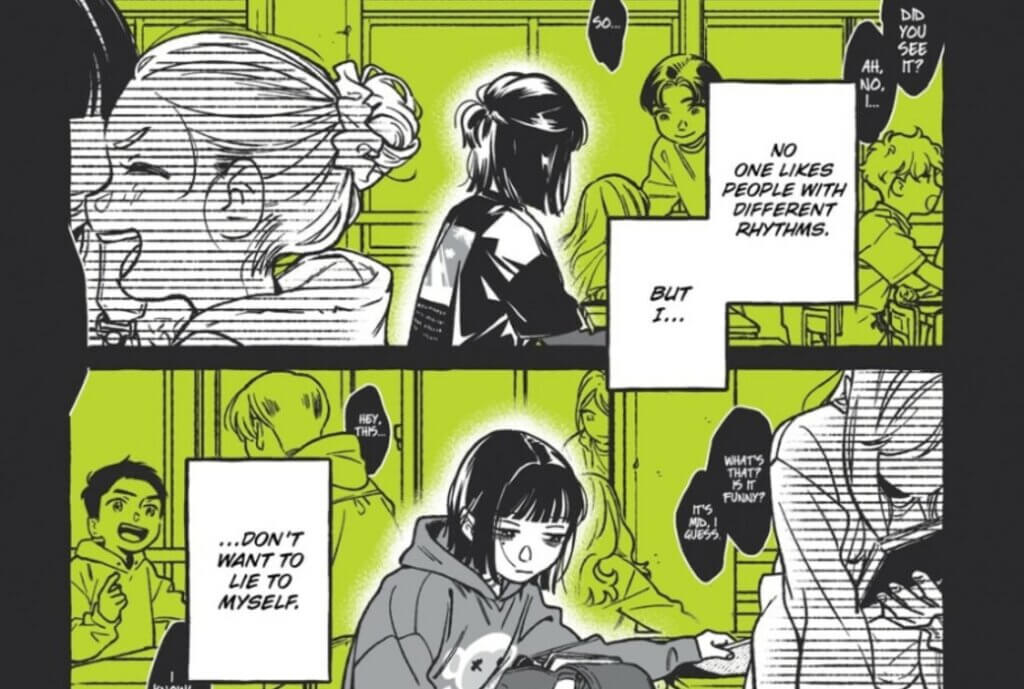
The Characters
Speaking of the characters, most of the ones seen in volume 1 are delightful. Of the two main female leads, Mitsuki Koga is the one I liked most due to how I related to her personality and her backstory. As mentioned earlier, she is reserved yet secretly passionate, especially about rock music, but mostly keeps this passion hidden due to feeling out of place after falling out with a friend with “a different rhythm” in elementary school. I really enjoyed seeing Mitsuki bond with and start crushing on Aya, as well as develop her passion for music further by learning to play a guitar given to her by her uncle.
This brings me to my next favorite character, Mitsuki’s uncle Joe. He is the scruffy-looking manager of the record store who cares deeply about his niece, with his concern for her shown through thoughts and actions that range from hilarious to heartfelt. I especially loved how he supports Mitsuki’s budding friendship with Aya and her unspoken romantic feelings for her. In fact, he literally says, “I guess we should use this (music) playlist for the ceremony,” when he sees Aya’s earnestness about rock music, implying that he expects Mitsuki to marry Aya someday.
Speaking of Aya, she has potential as far as character growth is concerned. While I didn’t like her as much as Mitsuki, I empathized with her need to sometimes “keep up appearances” in front of her friends and hide her passion for rock music. It doesn’t fit with how she is perceived by her main friend group consisting of two other flashy girls named Chizuru and Mao, and if she brings it up at all, she gets weird looks or rude comments. It makes me curious about how Aya discovered rock music and if she always felt alone in her interest before meeting Mitsuki.
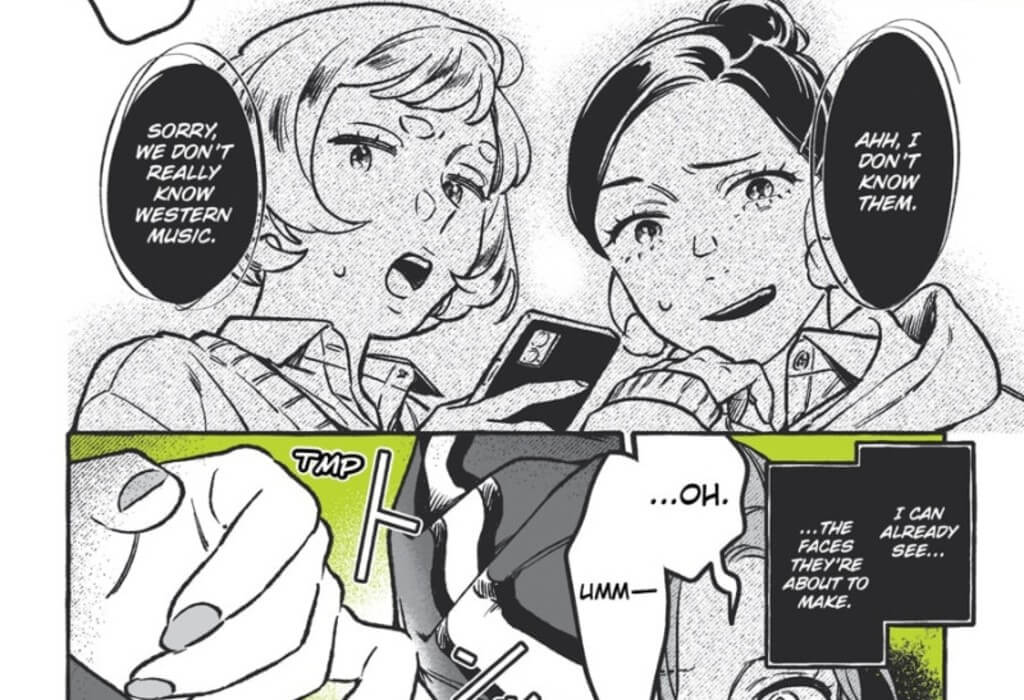
One final character that ended up being a pleasant surprise is Megumu Narita, a male classmate who figures out that Mitsuki’s school and record store personas are one and the same. After hilariously failing to charm Mitsuki, he happens to see Aya go into the record store, and recognizes Mitsuki as a result. Admiring Mitsuki’s androgynous charm, he confronts her about her dual identity and is told to keep it a secret. After he agrees, he decides to help Mitsuki and Aya become closer.
Due to my past experience with homophobic American censorship in anime and American media, I fully expected that a male character like Megumu would try to keep flirting with Mitsuki and Aya after being shot down. Instead, he stays in his lane, befriends Mitsuki, and tries to encourage her to befriend Aya and tell her the truth, all without ignoring Mitsuki’s boundaries. After seeing minor male characters in American shows like Glee and Legends of Tomorrow try to “turn” lesbian or bisexual characters straight, a character like Megumu that genuinely supports his new queer female friend is a breath of fresh air.
The Music
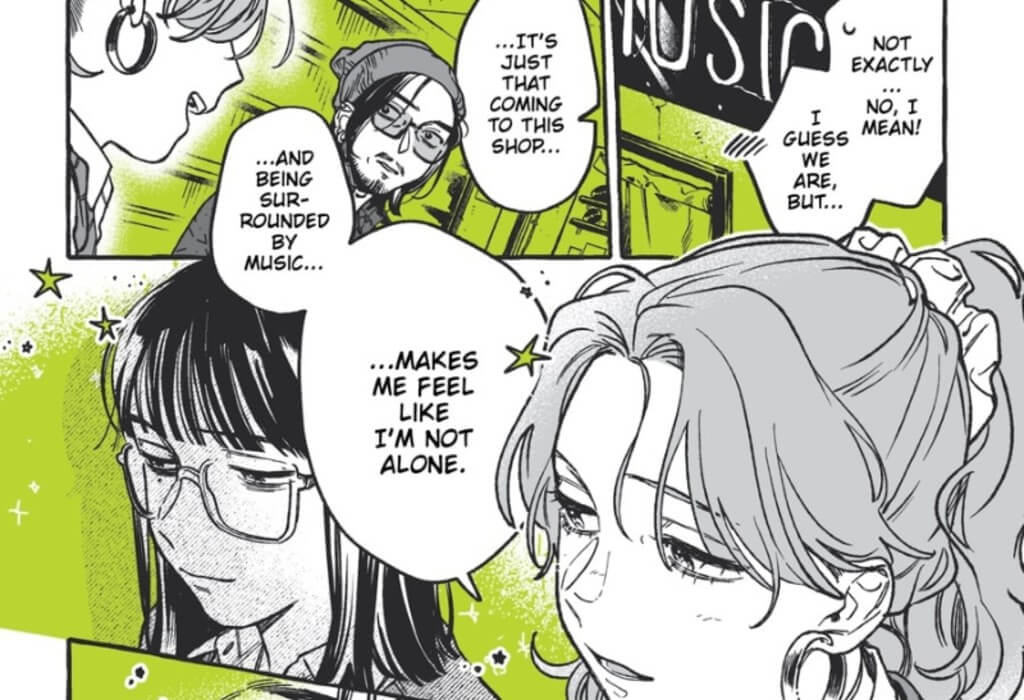
I would be remiss as a rock music fan if I didn’t talk about the role rock music plays in this book. Before I read it, I discovered that Sumiko Arai made a music playlist for the manga featuring songs that Aya and Mitsuki listen to in the manga. It’s a great selection of songs by classic and contemporary rock bands and artists such as Nirvana, Gorillaz, and Willow. It hyped me up to read this manga because it showed me that the main characters had taste, and would probably have a lot of fun talking about the music with each other.
Yet even beyond the references, this manga does an incredible job of showing how finding even one person who enjoys the music you do can change your life for the better. This is especially important during your teen years, when you are trying to figure out who you are and where you belong. In high school, I would’ve given anything to have a longtime friend like Mitsuki when I was made to feel ashamed for liking alt. rock and nu-metal by my peers, just because it didn’t fit their perception of what I was expected to like as a mixed race Black-Asian person. The closest I ever got was the girl who introduced me to alt. rock and nu-metal, but we were only friends for a short period of time.
The Verdict
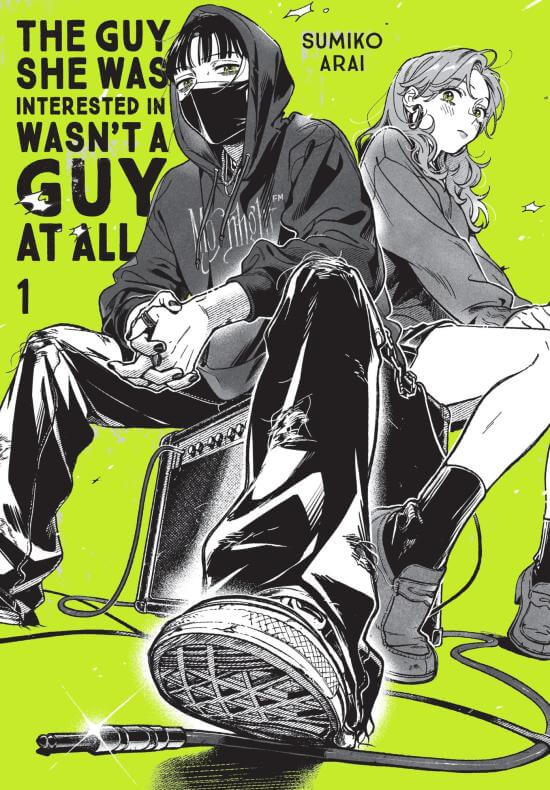
This is a fantastic new yuri manga with very few flaws. I would’ve liked Aya’s backstory to be shown alongside Mitsuki’s, but I understand why it wasn’t. I highly recommend it to anyone who likes music manga, yuri manga, or both! Green yuri manga rawks!
The Guy She Liked Wasn’t A Guy at At All Vol. 1 can be purchased from the Yen Press Store, Barnes and Noble, and Amazon.
If you liked The Guy She Liked Wasn’t A Guy At All, then you might also like:
- Whisper Me A Love Song
- Whispered Words
Credits
Author and Artist: Sumiko Arai
Translator: Ajane Oloye
Lettering: Brandon Bovia
Published In English by Yen Press
Article editor: Anne Lee
The Good
- Gorgeous character designs
- Queer female leads worth worthing for
- Good supporting cast
- Awesome rock music references
The Bad
- Not enough backstory for Aya shown, but this can be remedied in future volumes
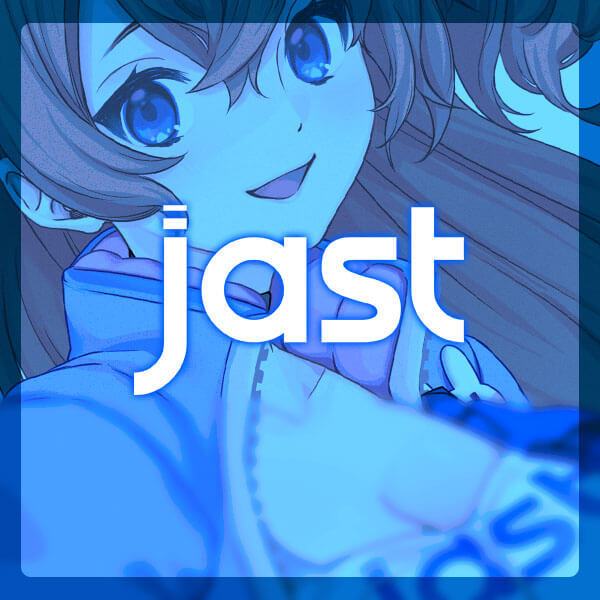
Featured Sponsor - JAST
The sweetest romance and the darkest corruption, the biggest titles and the indie darlings; for visual novels and eroge, there's nowhere better.
Big thank you to our supporters
From their continous support, we are able to pay our team for their time and hard work on the site.
We have a Thank-You page dedicated to those who help us continue the work that we’ve been doing.
See our thank you page